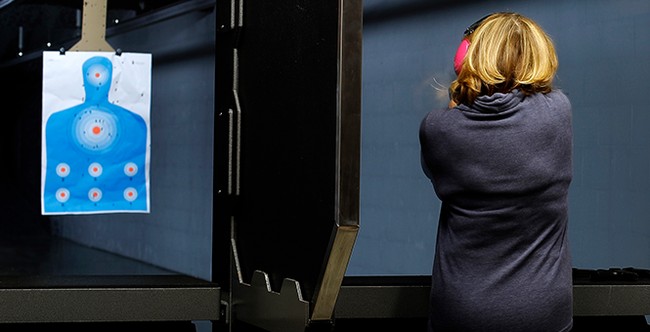For the past few years, one of the dominant narratives about gun ownership in the U.S. is that it’s becoming more diversified, with more women, minorities, and liberals embracing their right to keep and bear arms. But that narrative appears to be at odds with Gallup’s latest survey of gun owners, at least at first glance.
Gallup itself claims the data reveals that “gun ownership among U.S. adults is holding steady near 30%,” but that topline figure “masks a sharp increase in ownership among Republican women offsetting declines among Democratic and independent men.” The pollster adds that gun ownership “remains high among Republican men but is relatively scarce among Democratic and independent women,” which is true enough. Still, that doesn’t tell the whole story.
Gallup’s latest report on gun ownership trends is oddly grouped in six-year periods going back to 2007; 2007 to 2012, 2013 to 2018, and 2019 to 2024. The company claims the grouping “allows for in-depth analysis of ownership by key subgroups and changes over time among those subgroups,” but it’s unclear to me why comparing three six-year periods would allow for any better analysis than simply looking at these changes on a yearly basis.
Even using Gallup’s methodology, the data shows a slight increase in gun ownership among self-identified Democrats between 2013-2018 and 2019-2024; from 17% in the earlier period to 19% in the most recent six-year period. That’s still three points lower than the 22% of Democrats who reported owning a gun between 2007-2012, but it suggests a rebound in gun ownership on the left rather than a steady decline.
Gallup’s data shows an 11-point increase in gun ownership among Republican women between 2013 and 2024 (22% to 33%), as well as smaller increases among indie women (16% to 18%) and Democrat women (11% to 12%). Among men, Republican gun ownership held steady at 60% between 2013 and 2024, while increasing 4 points among Democrats (25% to 29%). Gun ownership among male independents dipped, however, from 43% to 39% over the past decade.
Some of the changes might be attributed to the differences in party identification that have taken place over the past decade. In 2013, for instance, Gallup reported 31% of respondents identified as Democrat, 25% as Republican, and 42% as independent. In Gallup’s most recent survey, conducted in mid-October, 32% identified as Democrat, 29% as Republican, and 37% as independent. There are almost certainly gun owners who’ve changed their party identification during the last ten years, but it’s difficult to account for that variable when looking at gun ownership rates by political affiliation.
Still, it’s fair to say that gun ownership is far more common among Republicans than Democrats, and the gap between the two parties is widening even with the uptick in gun ownership on the left. From 2013 to 2018 there was a 24-point gap between Republican and Democratic gun owners, but that figure increased to 28 points in the most recent six-year period surveyed by Gallup.
The gender gap, on the other hand, is shrinking. Men are still more than twice as likely to report gun ownership than women (43% to 20% from 2019 to 2024), but the percentage of women who say they own a gun has grown five points over the past decade, while the percentage of men has remained steady at 43%.
Gallup’s data provides more evidence that the anti-gun extremism embraced by most Democrat politicians is hurting them with key demographics. In the aftermath of this year’s elections there’s been a lot of hand-wringing on the left about attracting male voters and winning back rural America, but it’s gonna be tough to do that when the party’s platform is so hostile to gun owners. Nearly half of adult men own a firearm, according to Gallup, and the figure is even higher among rural residents, with 51% reporting they own a gun.
My guess is that gun ownership is higher across the board than what Gallup has found, given that some gun owners aren’t going to reveal that fact to a stranger on the phone. For the sake of argument, though, let’s take Gallup’s figures at face value. It’s certainly true that not every gun owner is a Second Amendment advocate, but when Democrats are opposed to common sense measures like right-to-carry reciprocity while trying to ban the sale and possession of the most popular rifles and ammunition magazines in the country, they’re bound to tick off a healthy number of voters in those key demographics.
Anti-gunners routinely claim that Republican politicians are in thrall to the gun lobby, but the truth is that conservative candidates are simply responding to the desires of their base. The same can be said of Democrat politicians, at least those in cities and suburbs where gun ownership is relatively rare and anti-gun attitudes are the strongest, but the challenge for Democrats is that some members of their base of support are starting to embrace their Second Amendment rights. The shift is significant enough to get candidates like Kamala Harris to change their messaging around the right to keep and bear arms, but it’s not enough (yet, anyway) to get the party to actually change its policies.
Read the full article here





